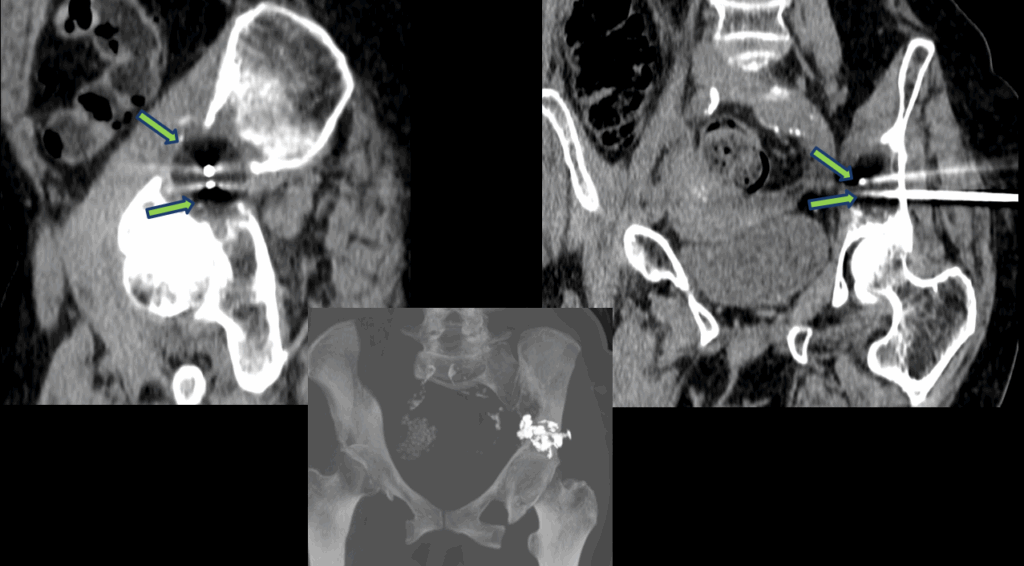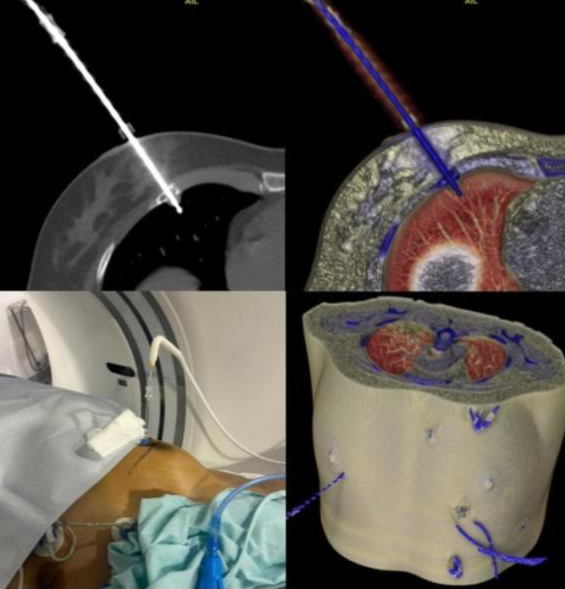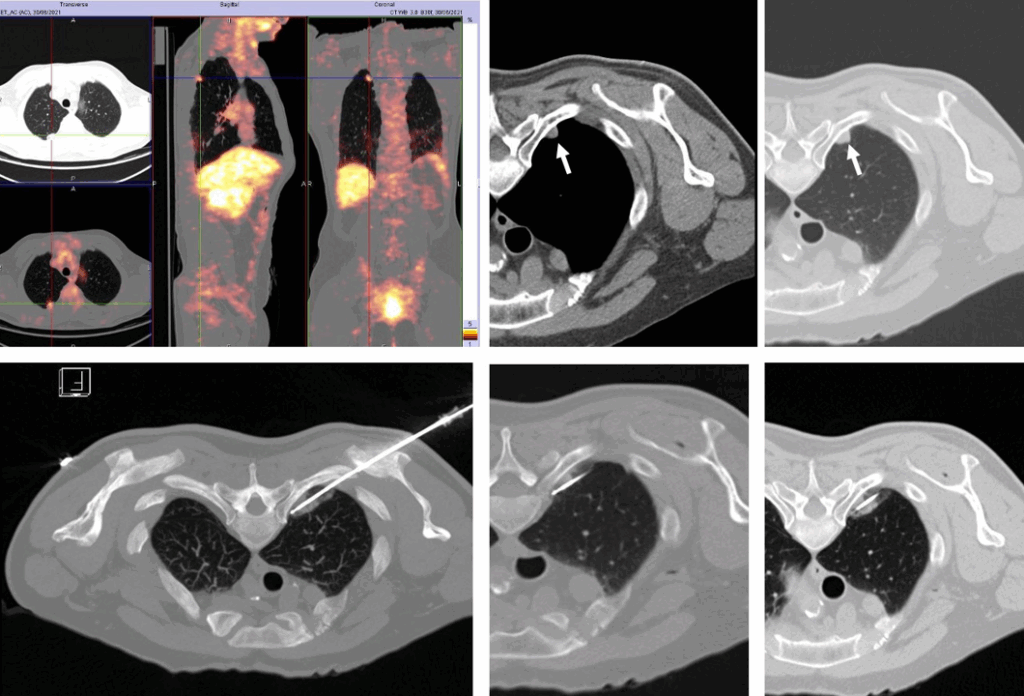Cryoablation
Advanced Tumor Treatment Through Controlled Freezing
What Is It?
Cryoablation is a minimally invasive, image-guided treatment that uses extreme cold to destroy cancerous or benign tumors with precision. A thin needle (cryo-probe) is inserted through the skin under CT, MRI, or ultrasound guidance, and a highly localized ice ball is formed to freeze and ablate the targeted tissue—without the need for open surgery.
Cryoablation is used to treat tumors in multiple locations:
- Bone (e.g., spine, pelvis, long bones – for pain relief and stabilization)
- Kidneys (especially small renal masses)
- Lungs (select pulmonary nodules)
- Liver (in primary or metastatic disease)
- Breast ( selected breast lesions)
- Soft tissues (e.g., desmoid tumors, lymph nodes, muscle-based lesions)
In some bone procedures, cryoablation is combined with cementoplasty, vertebral implants, or percutaneous screws to further stabilize weakened areas.
Key Benefits
- Precise tumor targeting with minimal impact on surrounding healthy tissues
- Excellent pain control for bone metastases
- Preservation of organ function (especially kidneys and lungs)
- Option for patients who are not candidates for surgery
- Repeatable and combinable with other therapies like radiotherapy or systemic treatments


Preparation
- Pre-procedure imaging and oncological/orthopedic evaluation are required
- Fasting for 6–8 hours before the procedure
- Bloodwork and coagulation tests
- Temporary suspension of anticoagulant therapy if bone stabilization or cementoplasty is planned

Recovery and Expectations
- Pain relief usually begins within 24 to 72 hours (for bone tumors)
- Mobilization is encouraged early, with partial or full weight-bearing depending on the site
- Physical therapy may be advised for functional recovery
- In soft tissue and organ ablations, recovery is typically rapid and well-tolerated
Follow-Up
- Imaging control (MRI, CT, or PET-CT) is scheduled within 3 to 6 months
- Clinical follow-up is based on symptoms, tumor type, and location
- Cryoablation can be repeated if necessary and combined with other treatments in a multidisciplinary approach
Significant pain relief typically occurs within 24 to 72 hours.
Early mobilization is encouraged, often with partial weight-bearing.
Physical therapy may be recommended based on individual needs.
Cryoablation is safe, effective, and tailored to each patient’s needs, offering a modern and minimally invasive solution to control tumor growth, relieve pain, and improve quality of life.
